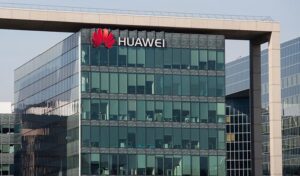Luxury fashion house Hermès has announced its plans to further increase prices after its stellar performance outpaced its competitors in the luxury goods sector at the end of 2023, propelling shares of the iconic Birkin bag maker to a record high.
Hermès Executive Chairman Axel Dumas revealed the firm’s intention to raise prices globally by 8% to 9% this year, following the announcement of impressive sales totaling 3.36 billion euros ($3.62 billion) for the three months ending December. This marked a remarkable 17.5% surge at constant foreign exchange rates, surpassing analyst expectations of 14% growth, according to Visible Alpha consensus estimates.
Commenting on Hermès’ exceptional performance, JPM analysts remarked, “Hermès is playing in a different league.” They highlighted the company’s strong brand momentum and robust cash returns to shareholders as key drivers of its success.
Renowned for its classic designs and meticulous management of production and stock, Hermès has established itself as one of the most consistent performers in the luxury goods sector, even during challenging economic conditions. This approach has helped maintain the brand’s aura of exclusivity.
Last year, Hermès raised prices globally by approximately 7% to account for higher production costs, with exceptions in the U.S. (around 3% increase) and Japan (double-digit increase due to currency fluctuations). The price adjustments, primarily implemented at the beginning of each year, are driven by factors such as labor and raw material costs, as well as fluctuating exchange rates.
In a gesture of appreciation, Hermès announced a 4,000 euro bonus for each of its more than 22,000 employees worldwide. Dumas emphasized that pricing was not the main growth driver, stating, “We don’t steer group growth through pricing strategies.”
While Chanel, Dior (owned by LVMH), and Louis Vuitton have aggressively raised prices for their handbags since the pandemic, Hermès continues to dominate the high-end market. Chanel’s handbag prices have approached levels similar to Hermès in recent years but fetch less on the secondary market. Despite its large scale and “flawless” marketing, Louis Vuitton still faces challenges in selling significant quantities of handbags priced above 4,000 euros, according to Bernstein analysts.
Hermès reported strong growth across all regions, particularly in China, where concerns about a sluggish post-COVID recovery had investors on edge. Dumas reassured that there had been no disruption in trends, noting that while he observed lower mall traffic in China during his last visit in the fourth quarter, this was not reflected in Hermès’ figures.
With a 12-month forward price-to-earnings ratio based on projected earnings at 48.6, Hermès commands a higher valuation than its rivals, including LVMH at 24.8 and Kering at 16.5, according to LSEG data.
The allure of handbags like the coveted Birkin, priced at $10,000 and above, remains strong among shoppers who are typically more resilient to economic uncertainties.
(Source: CNA | Bloomberg | Reuters)







